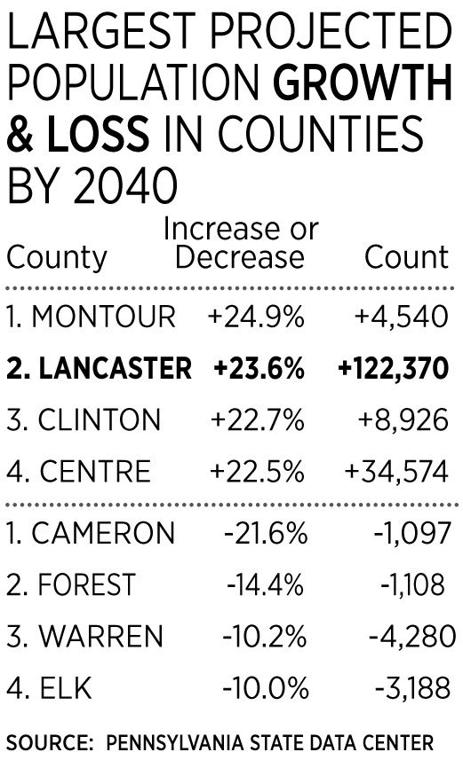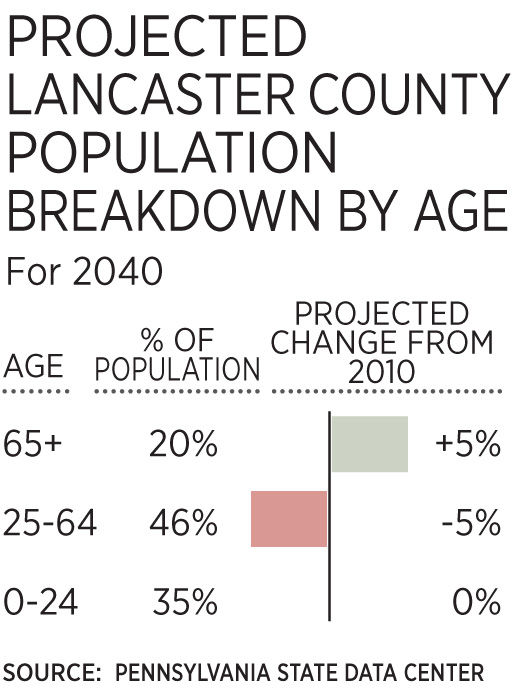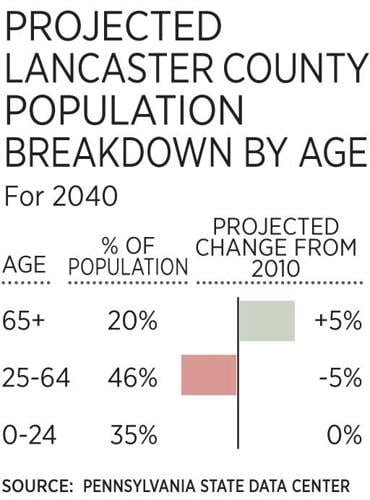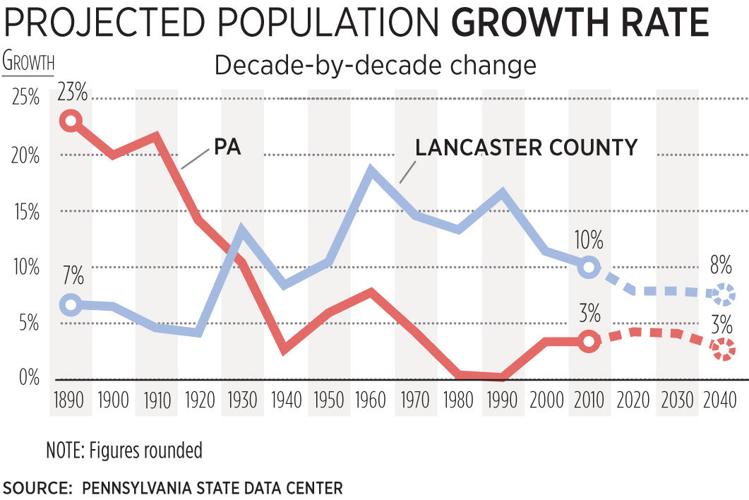If medals were awarded for population growth, Lancaster County would take home the silver.
The county is projected to be the second-fastest growing Pennsylvania county through 2040, behind only rural Montour County, 90 miles to the north.
By 2040, Lancaster County is projected to be home to 641,815 residents, a 23.6-percent increase over 2010, according to the Pennsylvania State Data Center.
That's an increase of 122,370 people, or the equivalent of two Lancaster cities.
In raw numbers, only two counties will add more residents — Philadelphia and Montgomery, with 333,938 and 138,706 more respectively.
By comparison, Lancaster County is projected to grow more than twice as fast as the 11.3-percent growth for Pennsylvania as a whole. Ten of the state's 67 counties may lose more than 5 percent of their population.
Most of the growth here will be from a natural increase in population with births exceeding deaths, said John Maurer of the Pennsylvania State Data Center. Newcomers are also expected to slightly exceed those who leave.
Another factor is people living longer, with the number of people age 65 and older accounting for 20 percent of the population in 2040 compared to 15 percent in 2010.
Why is the county growing so fast?

The diversified economy of southeastern Pennsylvania, including Lancaster County, has for decades helped fuel faster growth compared to other parts of Pennsylvania staggering from the decline of steel and coal, said Chuck Geiger, geography professor at Millersville University.
With development of Philadelphia's suburban counties reaching saturation, Lancaster County, particularly near the Pennsylvania Turnpike, has increasingly become home to Philadelphia area commuters. In addition, Lancaster County's proximity to jobs in Harrisburg and Baltimore draws residents.
Geiger also said job opportunities and improving quality of life in and around Lancaster City helps to attract and retain young people.
"Lancaster is a place where people want to live," said John Benhart Jr., a professor and chair of geography and planning at Indiana University of Pennsylvania. He said scenery, good schools and jobs have helped Lancaster County sustain growth for decades.
Lancaster County outpaces PA growth

A big question is will we be ready to handle the extra people.
County planning director James Cowhey says there's work to do, but he thinks the county is better prepared than it was during the explosive population growth of the 1980s.
The 23.6-percent increase projected here actually represents a slowdown from the 43.4-percent jump Lancaster County experienced between 1980 and 2010.
Almost all of Lancaster County's municipalities since the 1990s have steered most development to so-called growth areas, places near the city, boroughs and villages with adequate sewer, water and other infrastructure.
Existing urban and village growth areas should be able to accommodate the growing population over the next 25 years as long as builders get better at more compact, land-efficient development, Cowhey said.
The Lancaster Area Sewer Authority, which serves seven suburban municipalities, annually assesses service needs, director Michael Kyle said, and plans expansions only to achieve economies of scale that keep customer costs down.
A recent survey asked 136 business customers about their future growth, Kyle said. More than 90 percent expressed confidence the sewer authority will be able to meet their needs.
Growth areas
Presently, growth areas comprise 16.7 percent of the county and house 69.7 percent of the county's 534,130 people.
Because concentrating development in growth areas helps to save the county's most productive farmland, Cowhey said he doubts residents will favor expanding the growth areas.
But with denser growth comes traffic, and Cowhey said improving the movement of people and goods remains a priority.
"We're always collecting data on traffic flow in congested corridors and will continue to respond," he said. "I think we're going to see some technological advances (such as signal synchronization) that may help. New roads and more capacity isn't always the answer."
School districts need to plan for growth, and at Hempfield the big question is will the district someday need two high schools, superintendent Brenda Becker said.
The district's student body, now at 6,800, is projected to exceed 6,900 by 2021, moderate growth that could be accommodated by building a ninth-grade building instead of a second high school.
Becker said growth may also be managed by increasing courses online, in the evening and over the summer.
More elderly by 2040
 But Lancaster County's fastest growing age group is seniors, not children. Residents age 24 and younger will grow by 23.3 percent by 2040; those 65 and older by 65.1 percent.
But Lancaster County's fastest growing age group is seniors, not children. Residents age 24 and younger will grow by 23.3 percent by 2040; those 65 and older by 65.1 percent.
"The good news is we're living longer, and the bad news is we're living longer," said Jacqueline Burch, county Office of Aging director.
Waiting lists already exist for seniors needing financial assistance to afford home or community-based care, Burch said.
"Our hope is not everyone needs care all at the same time or at the same level," she said, "but we're already seeing folks that may have to go out of the county because there's not adequate space here."





 By JEFF HAWKES | Staff Writer
By JEFF HAWKES | Staff Writer

